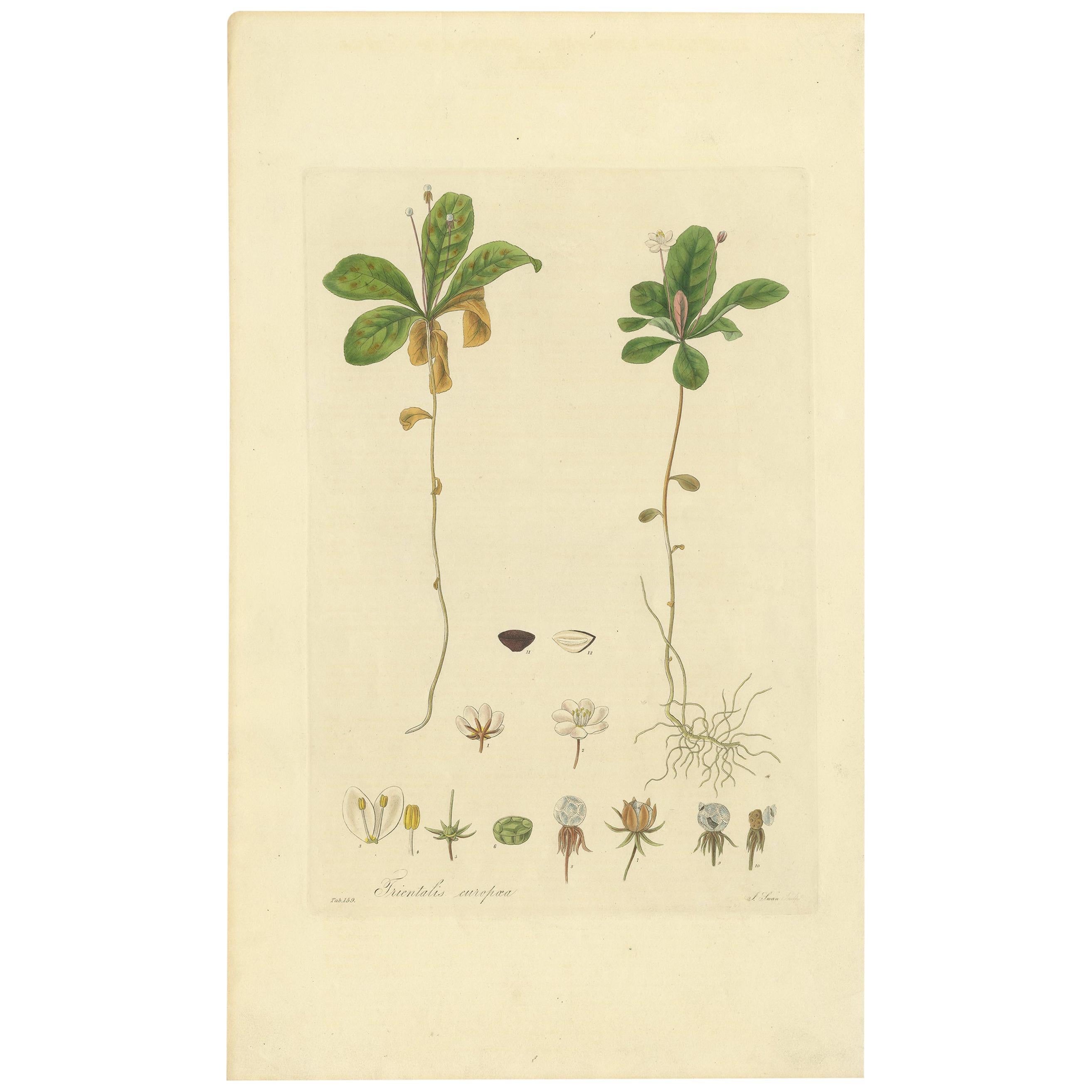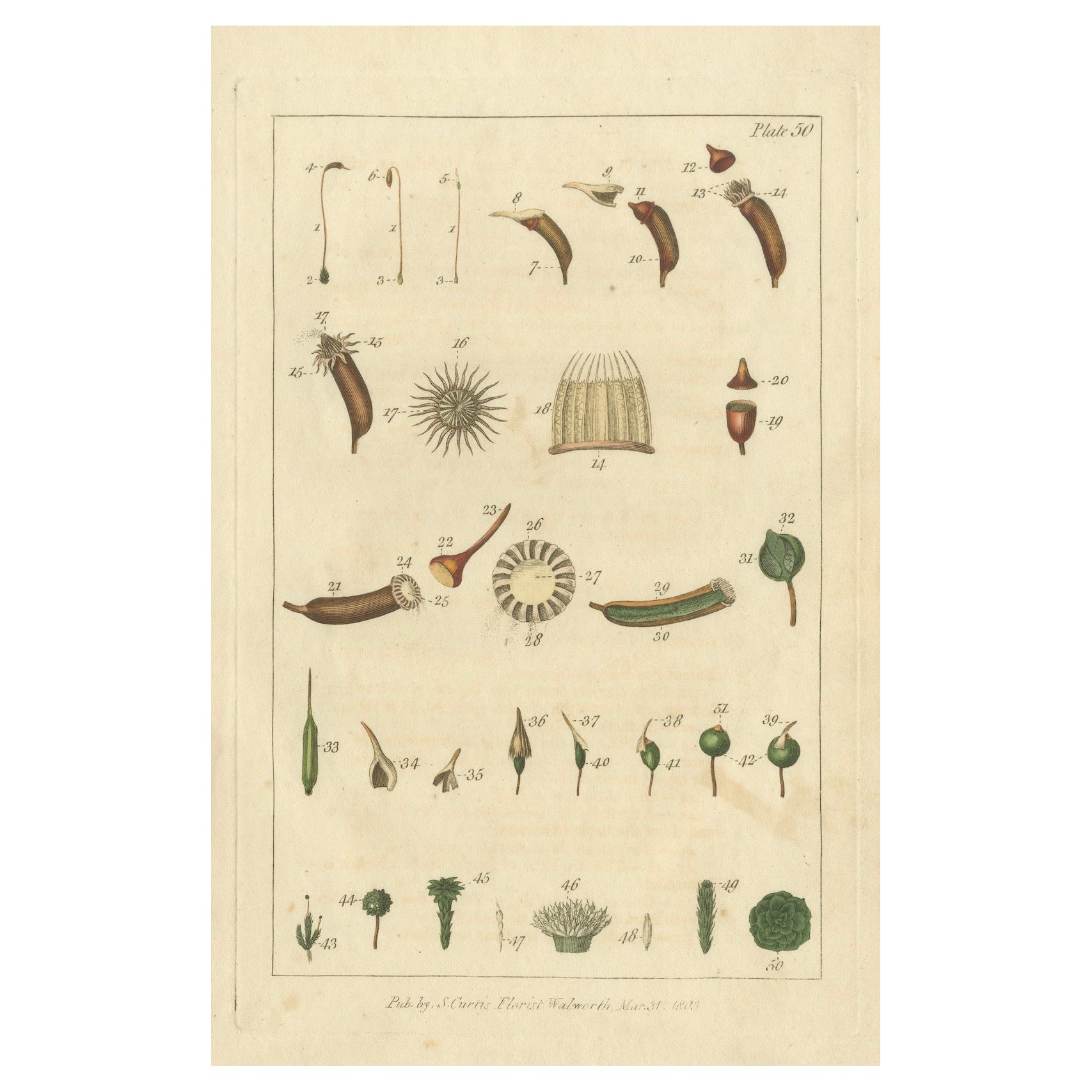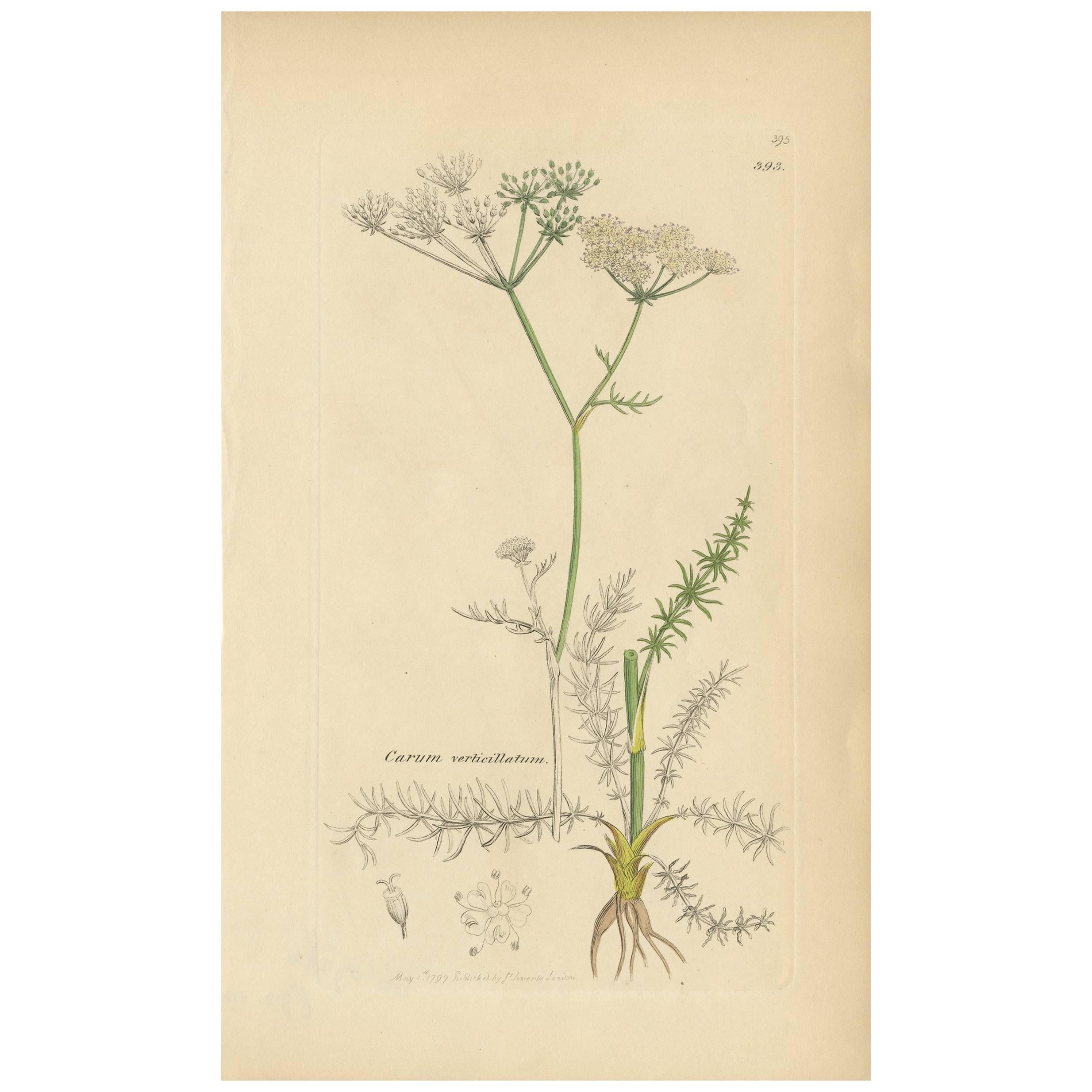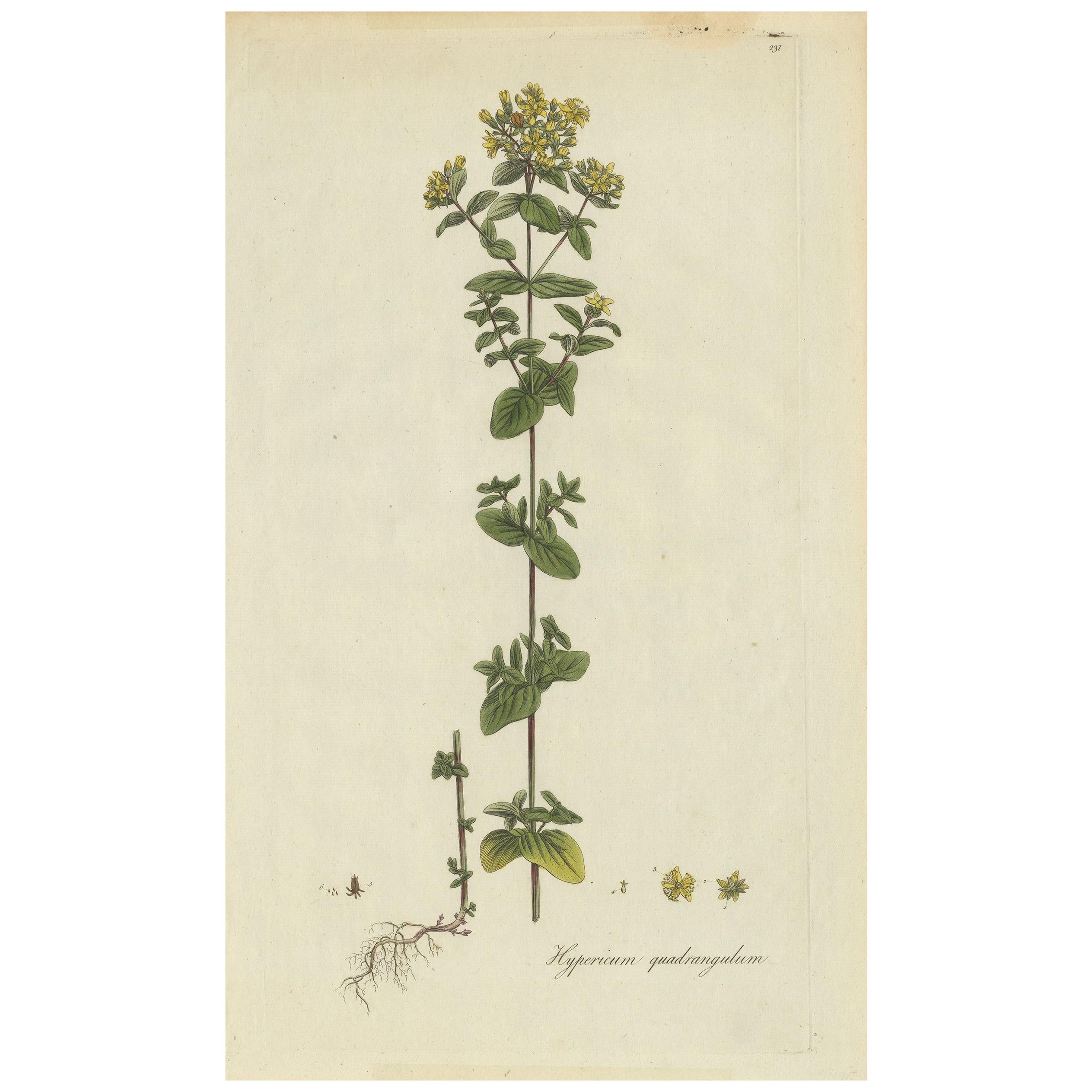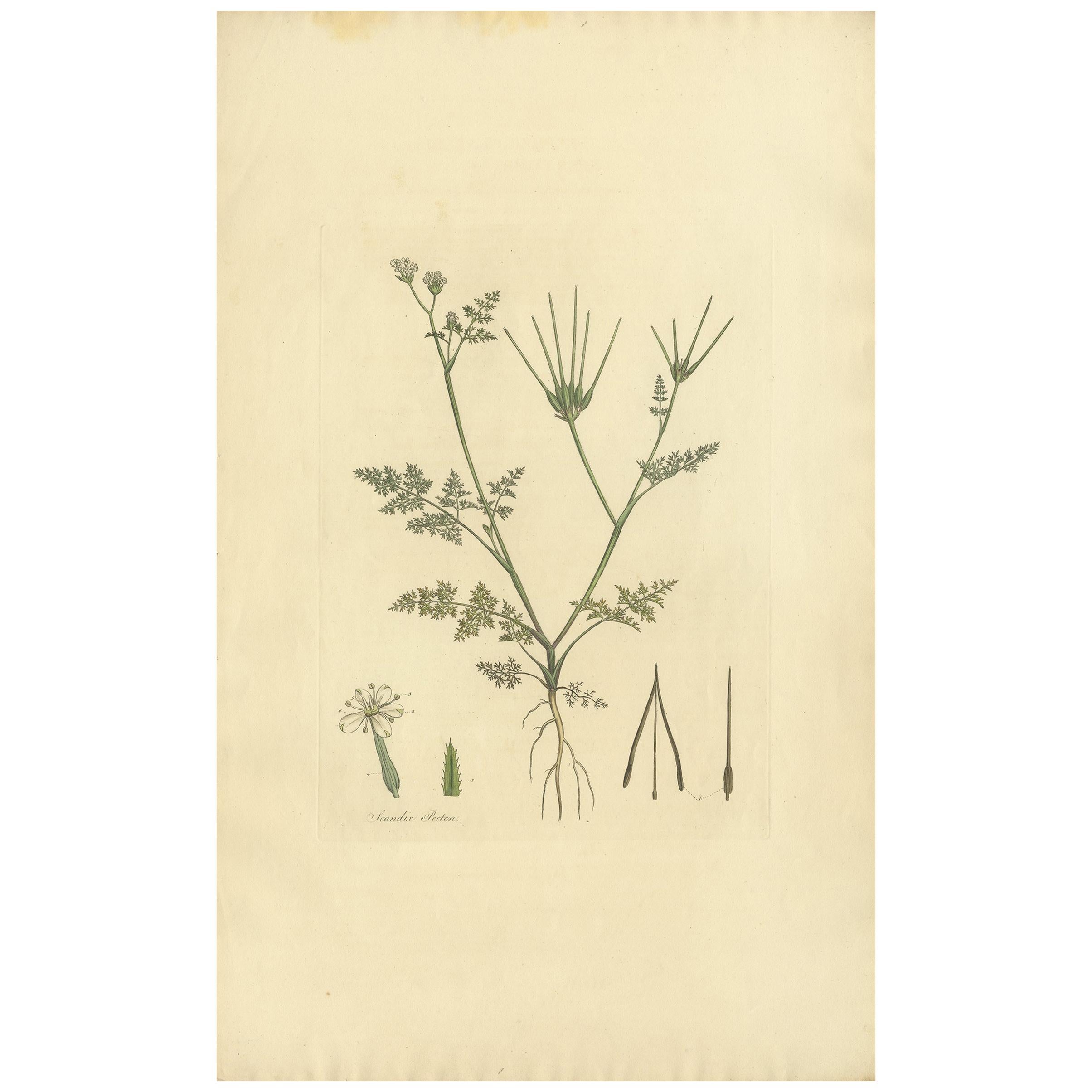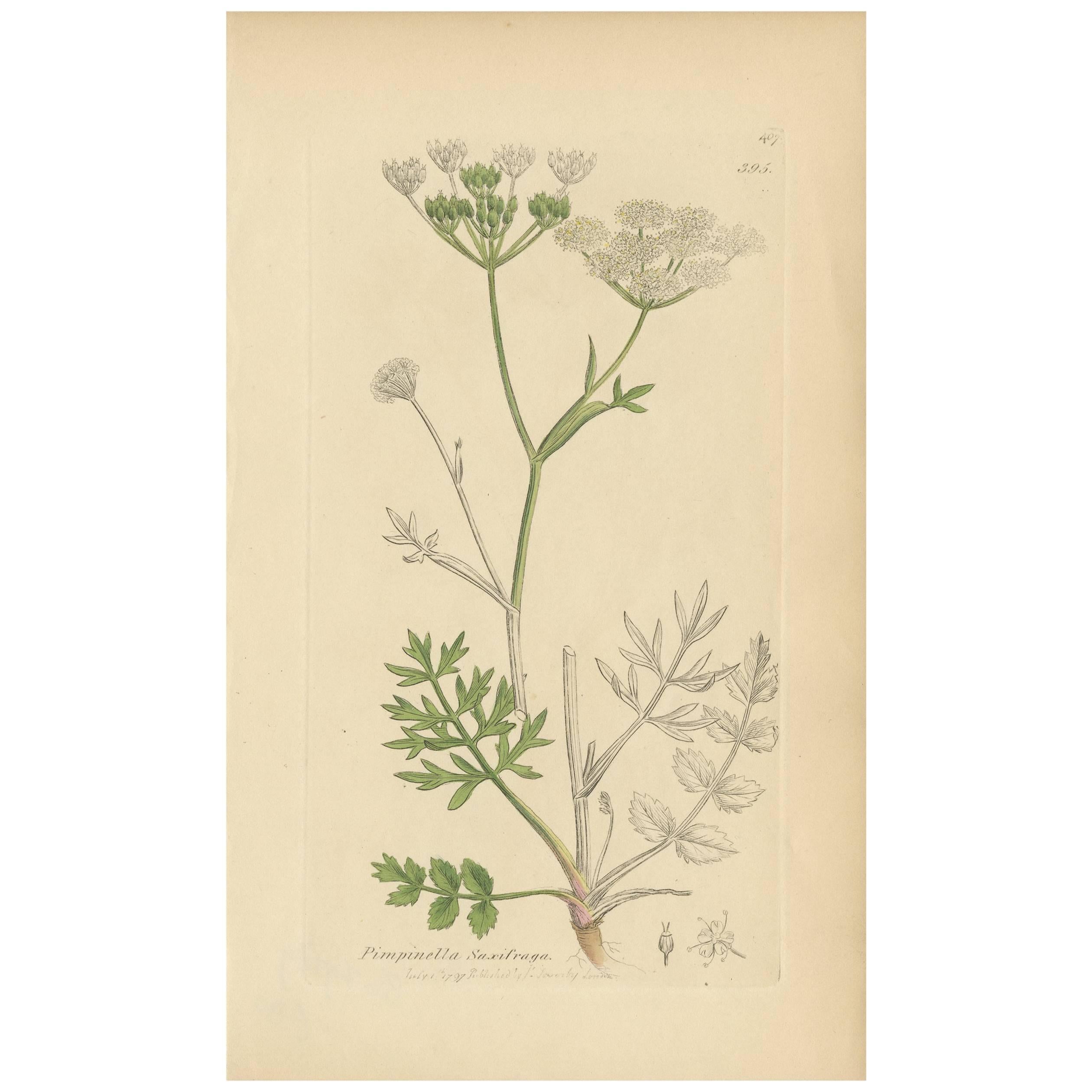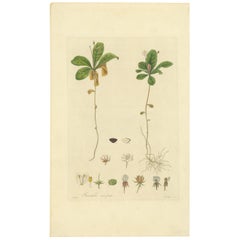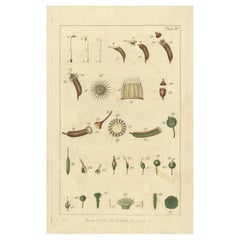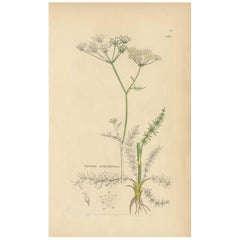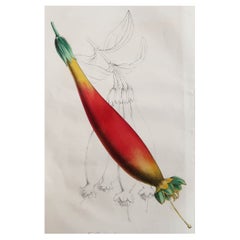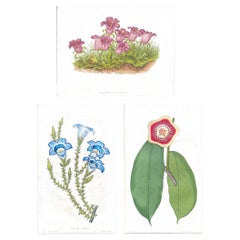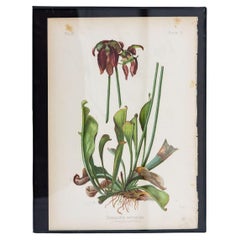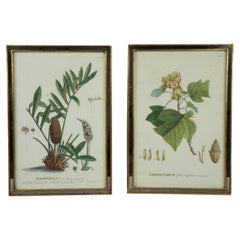Items Similar to The Delicate Predator: Botanical Illustrations of Drosera, 1777
Want more images or videos?
Request additional images or videos from the seller
1 of 10
The Delicate Predator: Botanical Illustrations of Drosera, 1777
$304.76
$380.9520% Off
£226.52
£283.1520% Off
€256
€32020% Off
CA$420.79
CA$525.9920% Off
A$466.63
A$583.2920% Off
CHF 245.18
CHF� 306.4720% Off
MX$5,701.42
MX$7,126.7820% Off
NOK 3,067.53
NOK 3,834.4120% Off
SEK 2,879.40
SEK 3,599.2520% Off
DKK 1,949.31
DKK 2,436.6420% Off
About the Item
The plant depicted in the illustration is identified as "Drosera rotundifolia," which is commonly known as the round-leaved sundew. It is a species of sundew, a carnivorous plant that captures and digests insects using sticky, glandular leaves.
This illustration is from "Flora Londinensis", which was a comprehensive study of the plants found in the vicinity of London around the 18th century.
It was initially authored by William Curtis. The illustrations for this work involved several artists over time, including Sydenham Edwards, James Sowerby, and William Kilburn, among others. However, the specific artist responsible for this particular illustration of Lotus corniculatus is not stated. More research is needed. It would typically be one of the artists who regularly contributed to Curtis's publications. To determine the exact artist, one would need to refer to the specific volume and edition of "Flora Londinensis" in which this illustration appears, as the artist might be credited therein.
The text accompanying the image describes the botanical characteristics of this plant, which includes details about its roots, stalks, leaves, flowers, and seeds. It is a detailed botanical depiction, with notations pointing to various parts of the plant to aid in identification and understanding of its structure and form. Birds-foot Trefoil is known for its use in medicine, agriculture, and other fields, as noted in the text.
It is a hand-colored engraving from the "Flora Londinensis". This kind of print was commonly made in the following way during the 18th century:
1. **Engraving**: The illustration would have been carefully engraved onto a metal plate, typically copper, by a skilled craftsman.
2. **Printing**: Ink would then be applied to the plate, and it would be pressed onto paper to create the print.
3. **Hand-Coloring**: After printing, the black and white image would often be hand-colored by an artist using watercolors.
This process allowed for high detail in the prints and individual color application, making each print unique. It was a labor-intensive method commonly used before the advent of color printing technology.
More specifics about the plant:
Drosera rotundifolia, commonly known as the round-leaved sundew, is a small, carnivorous plant that grows in bogs, fens, and other wet, acidic soils. Here are some specifics about its habitat and characteristics:
**Habitat:**
- **Geographical Distribution:** The round-leaved sundew is found in Europe, Asia, and North America. It has a circumboreal distribution, meaning it is found throughout the northern parts of the Northern Hemisphere, particularly in temperate regions.
- **Environment:** It thrives in open, sunny, wet environments where the soil is poor in nutrients, especially nitrogen. This is why the plant has adapted to obtain nutrients by catching and digesting insects.
**Characteristics:**
- **Leaves:** The leaves of Drosera rotundifolia are round, hence its common name, and covered with sticky hairs that secrete a dew-like substance. This substance glistens in the sun, attracting unsuspecting insects. When an insect becomes ensnared, the leaf slowly curls around the prey to digest it.
- **Flowers:** It produces small, white to pink flowers on a single, slender stalk that rises above the basal rosette of sticky leaves.
- **Growth:** It is a perennial plant, regrowing each spring from a root system that includes a central, vertical rhizome and fibrous roots.
- **Propagation:** Seed dispersal occurs through the wind, and the plant can also reproduce vegetatively through leaf cuttings.
**Adaptations:**
- The round-leaved sundew has evolved several adaptations to survive in nutrient-poor environments. The most notable are the sticky glands on its leaves that trap insects, which are then digested to supplement the plant's nutrient intake.
**Conservation:**
- In some areas, Drosera rotundifolia is considered rare or threatened, largely due to habitat destruction, such as the draining of wetlands and peat bogs for agriculture or development. Conservation efforts are important to preserve its natural habitats.
- Dimensions:Height: 19.18 in (48.7 cm)Width: 11.3 in (28.7 cm)Depth: 0 in (0.02 mm)
- Materials and Techniques:Paper,Engraved
- Place of Origin:
- Period:1770-1779
- Date of Manufacture:1777
- Condition:Good, given age. General age-related toning and/or occasional minor defects from handling. Please study scan carefully. Comes with double sided text leave.
- Seller Location:Langweer, NL
- Reference Number:Seller: BG-13714-11stDibs: LU3054338482262
About the Seller
5.0
Recognized Seller
These prestigious sellers are industry leaders and represent the highest echelon for item quality and design.
Platinum Seller
Premium sellers with a 4.7+ rating and 24-hour response times
Established in 2009
1stDibs seller since 2017
2,609 sales on 1stDibs
Typical response time: <1 hour
- ShippingRetrieving quote...Shipping from: Langweer, Netherlands
- Return Policy
Authenticity Guarantee
In the unlikely event there’s an issue with an item’s authenticity, contact us within 1 year for a full refund. DetailsMoney-Back Guarantee
If your item is not as described, is damaged in transit, or does not arrive, contact us within 7 days for a full refund. Details24-Hour Cancellation
You have a 24-hour grace period in which to reconsider your purchase, with no questions asked.Vetted Professional Sellers
Our world-class sellers must adhere to strict standards for service and quality, maintaining the integrity of our listings.Price-Match Guarantee
If you find that a seller listed the same item for a lower price elsewhere, we’ll match it.Trusted Global Delivery
Our best-in-class carrier network provides specialized shipping options worldwide, including custom delivery.More From This Seller
View AllAntique Botany Print of Trientalis Europea by Curtis, 'circa 1817'
Located in Langweer, NL
Antique botany print titled 'Trientalis Europaea'. Hand colored engraving of trientalis europaea, also known as chickweed-wintergreen or arctic starflower. This print originates from...
Category
Antique Early 19th Century Prints
Materials
Paper
$285 Sale Price
20% Off
Botanical Study of Various Plant Structures in an Original Engraving, 1803
Located in Langweer, NL
Botanical Study of Various Plant Structures
This engraving is from the publication "Flora Londinensis," an illustrated work detailing the flora found around London. The specific pla...
Category
Antique Early 1800s Prints
Materials
Paper
$133 Sale Price
20% Off
Antique Botany Print 'Carum Verticillatum' by J. Sowerby, 1797
Located in Langweer, NL
Antique print titled 'Carum verticillatum'. This print originates from Sowerby's English Botany, or Coloured Figures of British Plants, 1797.
Category
Antique Late 18th Century Prints
Materials
Paper
$57 Sale Price
20% Off
Antique Botany Print of a Species of St. Johnswort by Curtis, circa 1777
Located in Langweer, NL
Antique botany print titled 'Hypericum Quadrangulum'. Hand colored engraving of a species of St. Johnswort. This print originates from 'Flora Londinensis' by William Curtis.
Category
Antique Late 18th Century Prints
Materials
Paper
$285 Sale Price
20% Off
Antique Botany Print of Scandix Pecten-Veneris by Curtis 'circa 1817'
Located in Langweer, NL
Antique botany print titled 'Scandix Pecten'. Hand colored engraving of scandix pecten-veneris also known as shepherd's-needle, Venus' comb or Stork's needle. This print originates f...
Category
Antique Early 19th Century Prints
Materials
Paper
$238 Sale Price
20% Off
Antique Botany Print 'Pimpinella Saxifraga' by J. Sowerby, 1797
Located in Langweer, NL
Antique print titled 'Pimpinella Saxifraga'. This print originates from Sowerby's English Botany, or colored figures of British plants, 1797.
Category
Antique Late 18th Century Prints
Materials
Paper
$57 Sale Price
20% Off
You May Also Like
Original Antique Botanical Print, Lisianthus Princeps, circa 1835
Located in St Annes, Lancashire
Wonderful botanical print.
Lithograph by J & J Parkin and D.Hayes
After C.W Harrison
Original hand color
Published, circa 1835
Unframed.
Category
Antique 1830s English Chinoiserie Prints
Materials
Paper
Campanula Allionii – Original Antique Botanical Print, France, 19th Century
Located in Fukuoka, JP
Hand-colored lithograph from the 1800s
A finely detailed and richly colored 19th-century botanical print depicting Campanula Allionii, a charming alpine bellflower native to the sou...
Category
Antique 19th Century British Prints
Materials
Paper
Parrot-Headed Pitcher Plant Botanical Print on Paper, USA Early 20th C.
Located in South Salem, NY
A color print of a Parrot-Headed Pitcher Plant on paper. This print captures the essence of the native to the US blooming plant of the northern landscape with delicate finesse. In th...
Category
Early 20th Century American Prints
Materials
Paper
Two 18th Century Hand Colored Botanical Engraving of Plants from (1771)
Located in Stockholm, SE
Adorning the walls, two gracefully framed botanical engravings from 1771 capture nature's elegance in exquisite detail. Delicate strokes of...
Category
Antique 1770s European George III Decorative Art
Materials
Paper
Set of Two Rare Botanical Engravings by D’Orbigny — 1849
Located in Fukuoka, JP
Set of Two Rare Botanical Engravings by D’Orbigny — Dictionnaire Universel d’Histoire Naturelle, Paris, 1849
An exquisite pair of original hand-colored botanical engravings from the...
Category
Antique 19th Century French Prints
Materials
Paper
The Sundews - Lithograph by Vincenzo Tenore - 1870s
Located in Roma, IT
Lithograph hand watercolored.
Plate from "Atlante di Botanica popolare ossia Illustrazione di Piante Notevoli di ogni famiglia" (Atlas of popular botany or illustration of notable p...
Category
19th Century Modern Figurative Prints
Materials
Lithograph
More Ways To Browse
Carnivorous Plants
Asian Gong
Asian Marionette
Asian Walnut Chairs
Astragal Glazed Cabinet
Atomic Starburst
Baby Bottle
Baccarat Bear
Baccarat Crystal Inkwell
Bakelite Hardware
Baker Bombe
Baker Chippendale Dresser
Baker Furniture Hardware
Bakers Rack Glass
Ball Feet Chest
Ball Machine
Bamileke Beaded
Bar Wall Shelves
